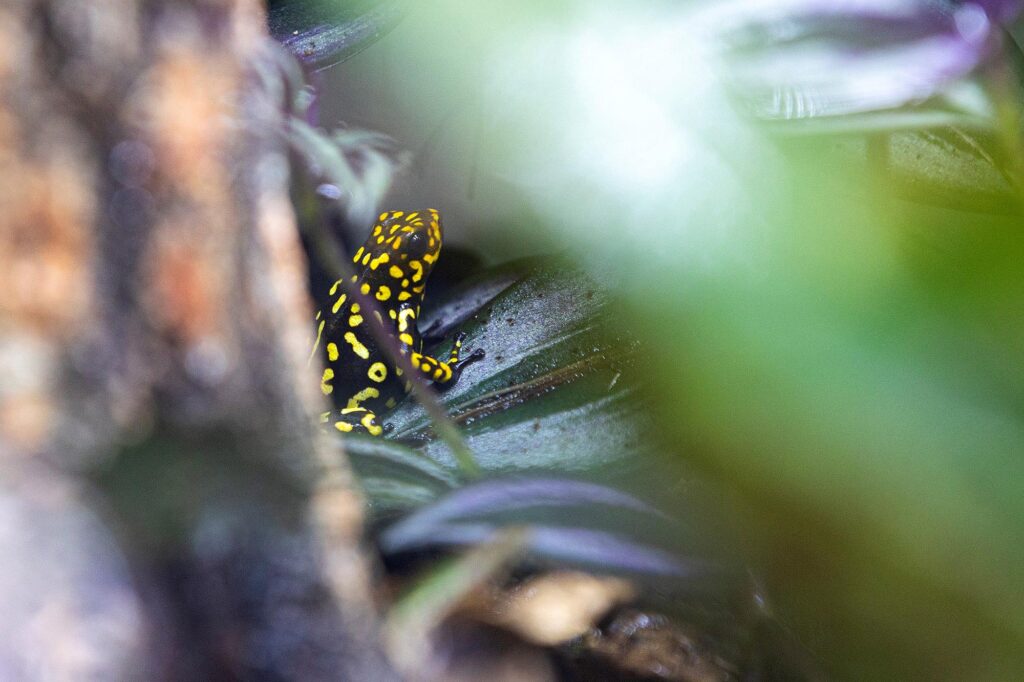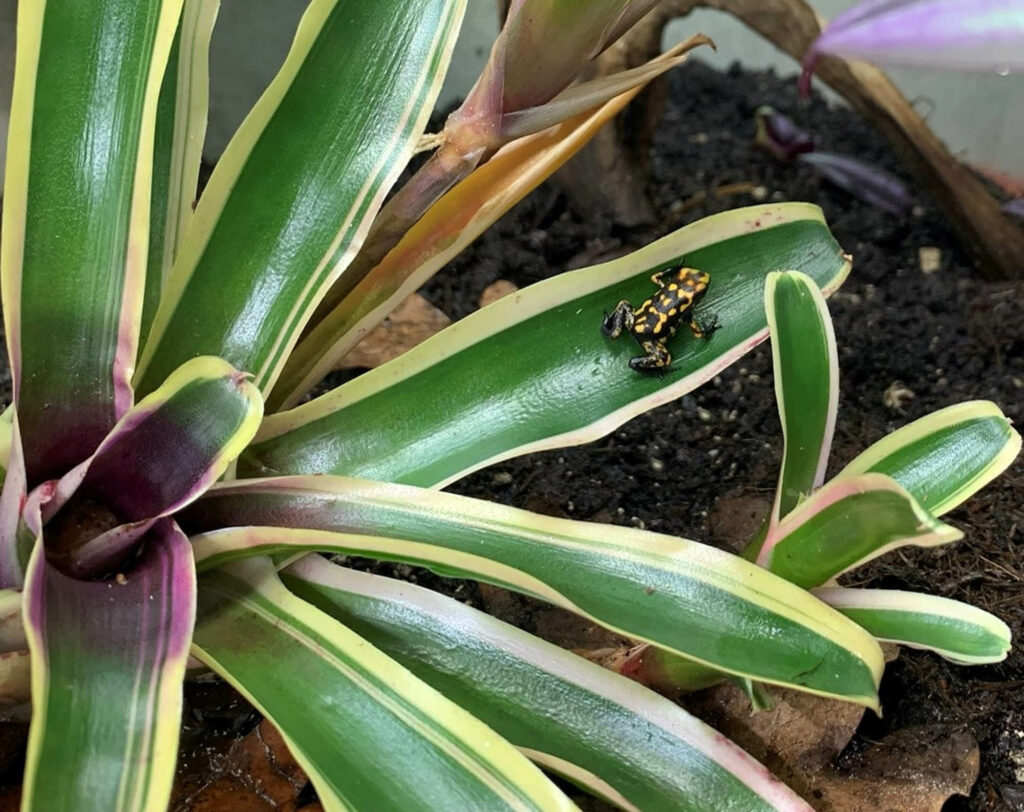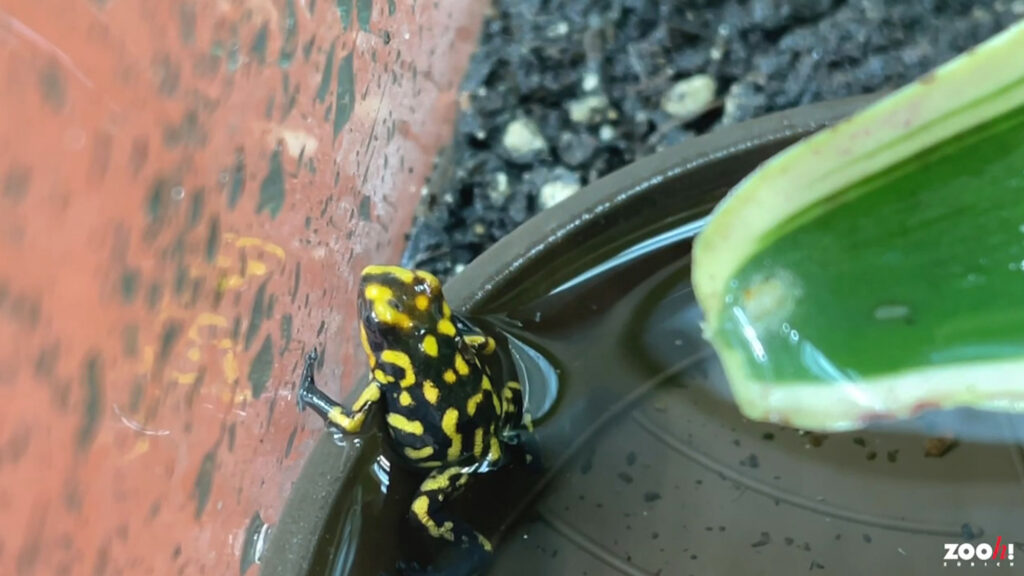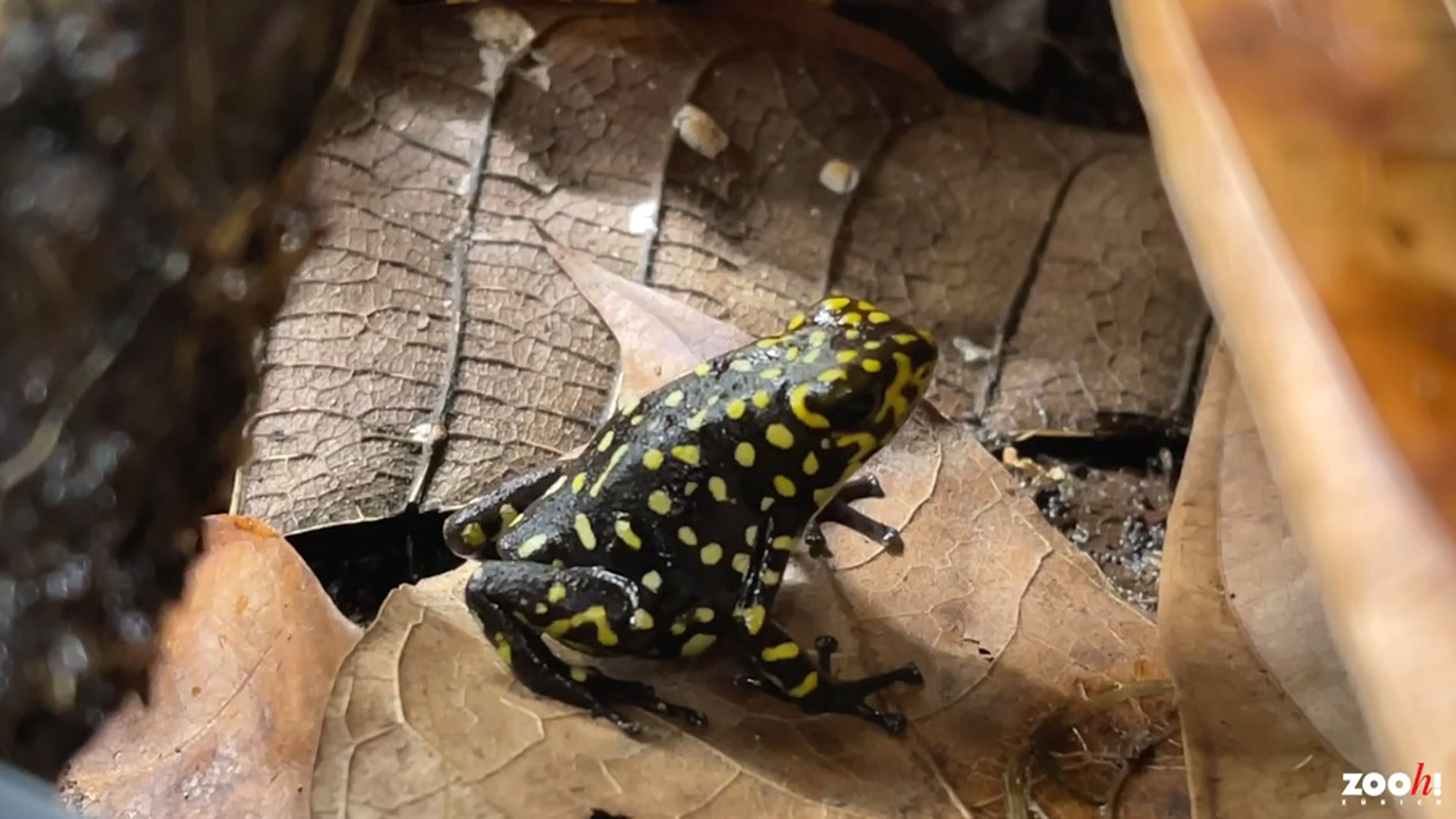A Swiss zoo has welcomed its first ever naturally reproduced harlequin poison dart frog – the brightly coloured amphibians that got their name because Native Americans used their toxic secretions to poison the tips of blow darts.
The brightly coloured frogs are listed as critically endangered and survive only in a small part of a Colombian forest where they lay only a few eggs and then jealously guard them from predators.
They are endangered because their bright colours, supposed to deter predators by reminding anything that might consider eating them that they are deadly to eat, makes them easy targets for animal smugglers to trap to be sold on the black market.
The Swiss zoo project therefore is vital in order to ensure the species survives and they admit it was a lot of trial and error until they finally got to the point where they could hatch the tadpoles,
which feeds on their own mother’s unfertilized eggs until fully developed.
After the creation of the new breeding facility, the Zurich Zoo in Switzerland succeeded in welcoming the first ever naturally developed harlequin poison frog (Oophaga histrionica), which also known as harlequin poison-dart frog.
According to the zoo the species’ is difficult to breed because egg laying takes place on a bromeliad leaf where the male guards and moisturizes the eggs until they full hatch two weeks after they are laid.
In contrast to regular frogs which usually lay a lot of eggs and suffer a great offspring loss because of predators, the harlequin poison frogs lay only a few eggs and intensively take care of them until they are fully developed.

After the eggs hatch and small tadpoles emerge on the outside, the parents transport them into small nutrient-poor waterholes, mostly located inside bromeliad funnels where they are safe from predators, but suffer food deficiency.
The Zurich Zoo reported: “This is where the breeding behavior of the females comes into play. The female feeds the tadpoles with unfertilized eggs until the young have completed metamorphosis. This feeding of the tadpoles with unfertilized eggs led to the Latin generic name Oophaga, which literally translates to egg-eaters.”
Zurich Zoo has had harlequin poison frog ever since 2000 and received three more in 2013, after they were seized by customs. Another male individual was brought from a private home shortly after.
The newly developed harlequin poison frog ended a long period of unsuccessful breeding efforts of the Zurich Zoo after the frogs struggled to carry their tadpoles into the watering holes.

The recent a mutual collaboration with the Cali Zoo located in Colombia which ended in the establishment of several terrariums has finally resulted in a cozy and a breeding-friendly environment for the small amphibian.
Due to habitat destruction and the number of individuals constantly declining due to illegal animal trade, the IUCN Red List of Threatened Species has listed the harlequin poison frog as ‘Critically Endangered’ and can only be found in a small area in Colombia in nature.
The Zoo reported: “Since 2006, the Zurich Zoo has been committed to the “Amphibian Survival” project to protect the amphibian population in Colombia.”
The small amphibian was only described as a distinct species in 2018.

To find out more about the author, editor or agency that supplied this story – please click below.
Story By: Georgina Jadikovska, Sub-Editor: James King, Agency: Newsflash
The Ananova page is created by and dedicated to professional, independent freelance journalists. It is a place for us to showcase our work. When our news is sold to our media partners, we will include the link here.




